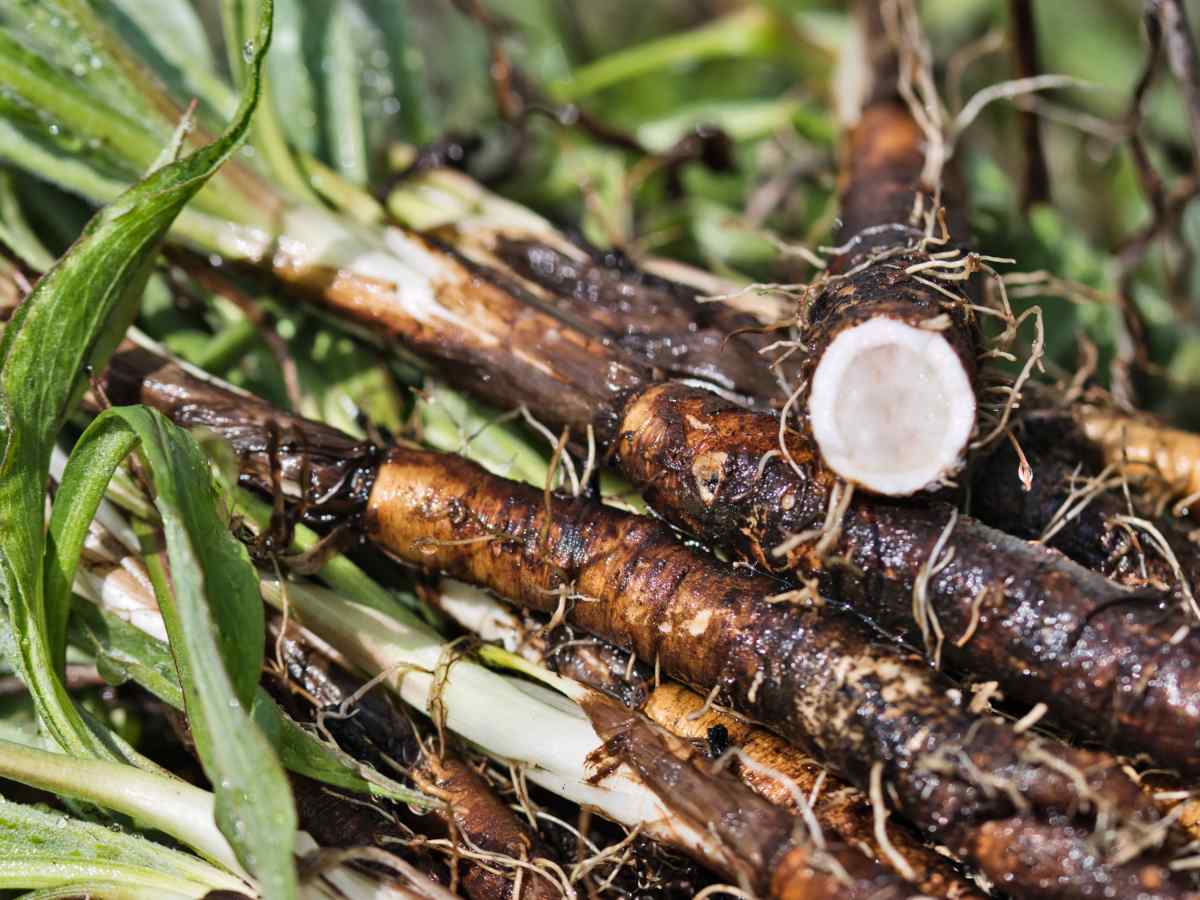
Black salsify, also known as Scorzonera hispanica, might not be the most famous vegetable, but it packs a punch with its unique flavor and numerous benefits. Often called the "oyster plant" due to its subtle, seafood-like taste, black salsify has been a staple in European kitchens for centuries. This root vegetable boasts a rich history, dating back to ancient times when it was used for medicinal purposes. Today, it's celebrated for its high nutritional value, including vitamins, minerals, and fiber. Whether you're a seasoned chef or a curious foodie, black salsify offers a delightful addition to your culinary repertoire. Ready to learn more? Let's dig into 20 fascinating facts about this underrated gem!
Key Takeaways:
- Black salsify, also known as "oyster plant," is a nutritious root vegetable rich in fiber and potassium. It can be roasted, boiled, or sautéed, making it a versatile and tasty addition to meals.
- With a rich history and cultural significance, black salsify has been used in traditional European cuisine for centuries and was believed to have medicinal properties. It's also known as "viper's grass" due to an old belief that it could cure snake bites.
What is Black Salsify?
Black salsify, also known as Scorzonera hispanica, is a root vegetable often overlooked. Its dark, rough exterior hides a creamy, delicious interior. Let's dive into some fascinating facts about this unique plant.
-
Black salsify is native to Southern Europe and the Near East. It thrives in temperate climates, making it a popular crop in countries like Spain, Italy, and Turkey.
-
The plant belongs to the Asteraceae family. This family includes other well-known plants like sunflowers, daisies, and artichokes.
-
It is sometimes called "oyster plant." This nickname comes from its subtle oyster-like flavor when cooked.
Nutritional Benefits of Black Salsify
Black salsify isn't just tasty; it's also packed with nutrients. Here are some health benefits you might not know about.
-
Rich in dietary fiber. This root vegetable helps maintain a healthy digestive system and can aid in weight management.
-
High in potassium. Potassium is essential for heart health and helps regulate blood pressure.
-
Contains inulin. Inulin is a type of prebiotic fiber that promotes healthy gut bacteria.
-
Low in calories. A great option for those looking to reduce calorie intake without sacrificing flavor.
Growing and Harvesting Black Salsify
Cultivating black salsify can be rewarding. Here are some interesting facts about its growth and harvest.
-
Prefers well-drained soil. Black salsify grows best in loose, sandy soil that allows its roots to expand.
-
Takes about 120-150 days to mature. Patience is key when growing this root vegetable.
-
Harvested in late fall or early winter. The cooler temperatures help enhance its flavor.
-
Roots can grow up to 12 inches long. These lengthy roots require careful digging to avoid damage.
Culinary Uses of Black Salsify
Black salsify is versatile in the kitchen. Here are some ways to incorporate it into your meals.
-
Can be roasted, boiled, or sautéed. Each cooking method brings out different flavors and textures.
-
Often used in soups and stews. Its creamy texture makes it a perfect addition to hearty dishes.
-
Pairs well with butter and herbs. Simple seasonings can highlight its natural taste.
-
Can be mashed like potatoes. A great alternative for those looking to switch up their side dishes.
Historical and Cultural Significance
Black salsify has a rich history and cultural importance in various regions.
-
Used in traditional European cuisine for centuries. It has been a staple in many European kitchens since the Middle Ages.
-
Believed to have medicinal properties. Historically, it was used to treat ailments like snake bites and digestive issues.
-
Featured in ancient herbal medicine texts. Its benefits were documented by early herbalists and physicians.
Fun Facts About Black Salsify
Let's wrap up with some fun and quirky facts about this intriguing vegetable.
-
Also known as "viper's grass." This name comes from an old belief that it could cure snake bites.
-
Has a milky sap. When cut, the root exudes a white, sticky substance that can be a bit messy but is harmless.
Black salsify is a fascinating vegetable with a lot to offer. Whether you're interested in its nutritional benefits, culinary uses, or historical significance, there's something here for everyone.
The Final Scoop on Black Salsify
Black salsify, often overlooked, packs a punch with its nutritional benefits and unique flavor. This root vegetable, also known as scorzonera, is rich in fiber, vitamins, and minerals. Its earthy taste makes it a versatile addition to various dishes, from soups to salads. Not only is it nutritious, but it's also easy to grow in your garden. With its long shelf life, black salsify can be a reliable pantry staple. Whether you're a seasoned chef or a home cook, incorporating this nutritious root into your meals can add both flavor and health benefits. So next time you're at the market, give black salsify a try. Your taste buds and body will thank you.
Frequently Asked Questions
Was this page helpful?
Our commitment to delivering trustworthy and engaging content is at the heart of what we do. Each fact on our site is contributed by real users like you, bringing a wealth of diverse insights and information. To ensure the highest standards of accuracy and reliability, our dedicated editors meticulously review each submission. This process guarantees that the facts we share are not only fascinating but also credible. Trust in our commitment to quality and authenticity as you explore and learn with us.


